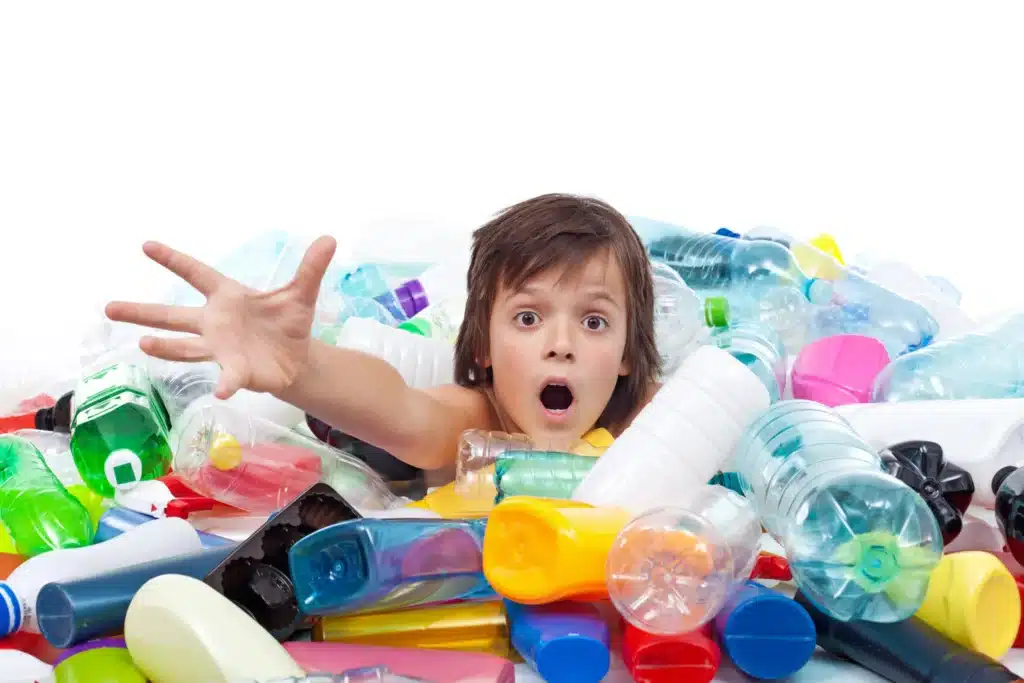Adults, Health, Kids, Uncategorized, Wellness
Microplastic detox for kids: 4 proven ways to reduce child’s exposure safely
Microplastics have become a silent danger, hiding in the food we eat, water, air, our bodies, and even in the bodies of our children. For parents, it’s alarming to discover that plastic can build up in your child’s body, potentially affecting their long-term health. But the good news is, there are safe and effective strategies to support microplastic detox for kids.
These tiny plastic particles, smaller than 5mm, can carry harmful chemicals like BPA and phthalates, which may disrupt hormones, affect development, and pose long-term health risks. For mothers seeking to protect their children, understanding how to detox from microplastics and reduce exposure is crucial. This comprehensive guide will walk you through practical, science-backed strategies for a safe microplastic detox for kids, empowering parents to safeguard their child’s health.
Why microplastic detox matters for kids
Unfortunately, kids are especially vulnerable to environmental toxins. Their organs are still developing, and their detox systems aren’t fully mature. Exposure to microplastics can affect hormone balance, immunity, and even cognitive function. According to the recent research, microplastics have been found in:
- Tap water
- Bottled drinks
- Processed snacks
- Plastic food containers
- Dust in the home
That’s why learning how to rid the body of microplastics is essential, especially for growing kids.
What every mother should know about plastic exposure
Mothers play a central role in a child’s daily environment, from the food they eat to the toys they play with. Here’s what you can do to take control and reduce plastic exposure before it becomes a detox issue:
1. Switch to Non-Plastic Food Storage
Reducing exposure is the first step in how to detox plastic from the body. Use glass or stainless steel containers instead of plastic Tupperware. Never heat food in plastic (even “microwave-safe” options). Use beeswax wraps instead of plastic wrap.
2. Say No to Bottled Water
Bottled water is a major source of microplastics. Encourage kids to drink 1–1.5 liters of filtered water daily to support kidney function. Use a high-quality water filter, like reverse osmosis, to remove microplastics from drinking water. This is a critical step in how to get rid of microplastics safely. Send kids to school with reusable stainless-steel water bottles or glass bottles.
3. Choose Natural Materials at Home
Replace plastic lunchboxes and utensils with glass, stainless steel, or bamboo options. Avoid plastic toys, opting for wooden or natural-fiber alternatives to prevent ingestion or inhalation of microplastics. Use cotton, wool, or bamboo textiles for clothes, bedding, and towels. Vacuum regularly (especially if you have synthetic carpets) using a HEPA filter to reduce dust-borne plastics.
4. Incorporate Fiber-Rich Foods
To speed up microplastic detox, eat more soluble fiber, such as chia seeds, flaxseeds, apples, and oats. It can bind to toxins and microplastics in the gut, aiding their elimination through stool. Fiber is a natural plastic detoxifier for kids.
5. Boost Antioxidant Intake
Foods like berries, broccoli, kale, and citrus fruits are rich in antioxidants, which counteract the oxidative stress caused by microplastics. These foods support liver detoxification, helping to detox from microplastics effectively.
6. Include Sulfur-Rich Foods
Garlic, eggs, and cruciferous vegetables (like cauliflower) enhance glutathione production and provide safe microplastic detox. These foods are powerful antioxidants that aid in how to remove plastic from your body.
7. Promote Detox Through Physical Activity
Physical activity can enhance microplastic detox by mobilizing toxins stored in fat tissues. For kids, movement is a fun and natural way to support microplastic detox:
- Encourage Sweating: Activities like running, dancing, or jumping on a trampoline promote sweating, which may help excrete chemicals like BPA and phthalates. Sweating is a promising method for how to flush microplastics out of the body.
- Incorporate Deep Breathing: Teach kids simple breathing exercises (e.g., inhale for 4 seconds, hold for 4, exhale for 4) to improve lung capacity and circulation, potentially aiding in detox from microplastics.
These activities are safe and engaging for children, supporting their body’s natural ability to detox microplastics.
8. Use Targeted Supplements
Certain supplements can act as a plastic detoxifier, binding to toxins or supporting detox pathways. One standout option is Plastiq Off – Zeolite Detox Supplement by SonoHealth, which uses nanosized zeolite to trap microplastics and other toxins in the body. Zeolite’s negatively charged structure binds to positively charged microplastic particles, facilitating their excretion. Always consult a pediatrician before introducing supplements to ensure they’re safe for your child. Other supplements to consider include:
- Chlorella: This alga binds to microplastics in the gut and bloodstream, aiding in microplastic detox.
- Activated Charcoal: Known for adsorbing toxins, activated charcoal may help trap microplastics in the digestive tract for elimination.



5. Improve Indoor Air Quality
Microplastics are present in household dust and air, especially from synthetic carpets and clothing. To reduce inhalation, a key route of exposure:
- Use HEPA Air Purifiers: Install HEPA filters in your home to capture airborne microplastics, reducing the need to detox from microplastics inhaled through the air.



- Choose Natural Fibers: Opt for organic cotton, wool, or linen for clothing, bedding, and carpets to minimize microplastic shedding from synthetic materials.
These steps create a cleaner environment, supporting a microplastic detox by reducing exposure.



